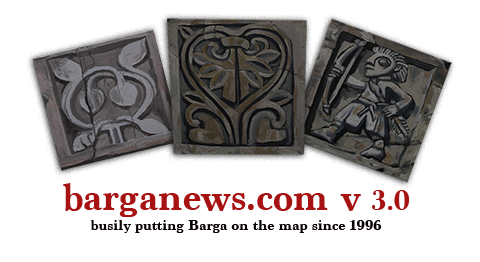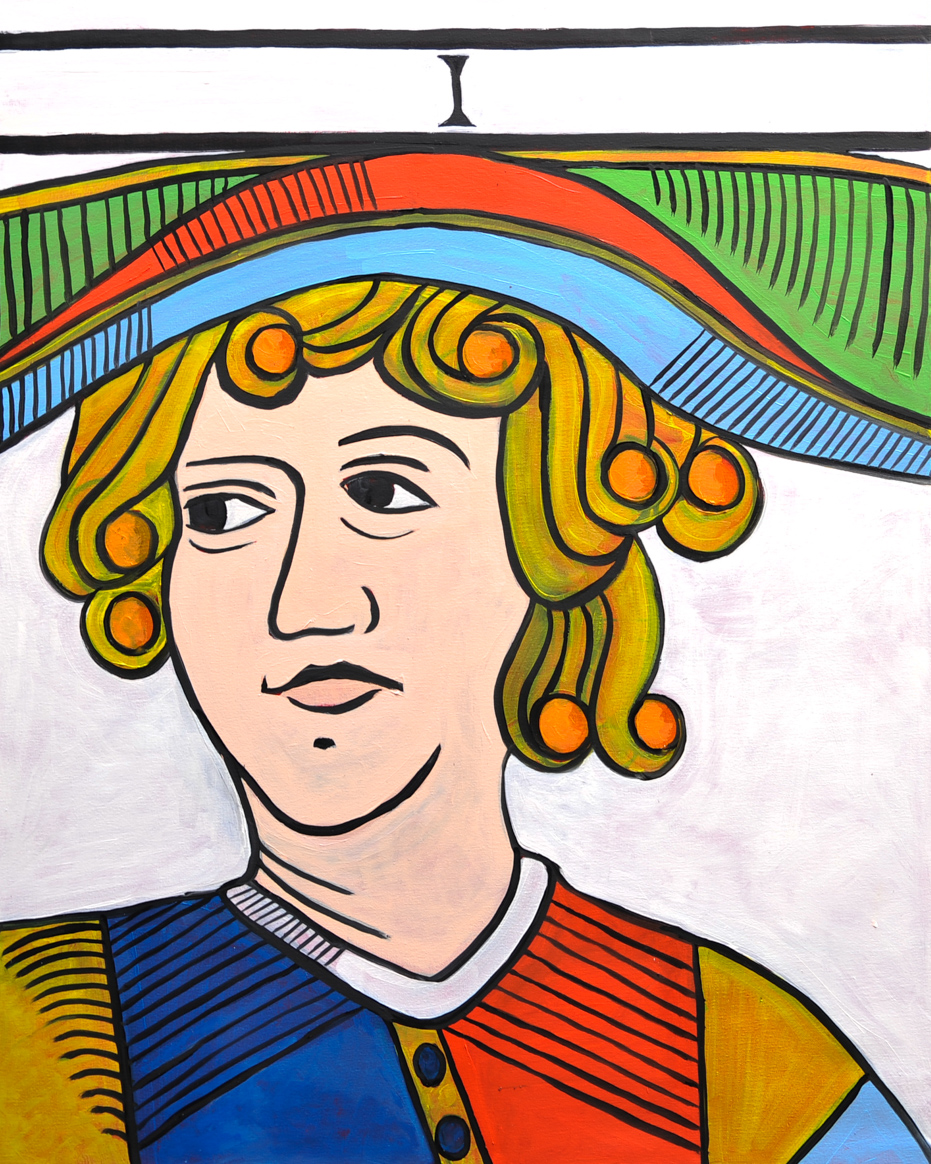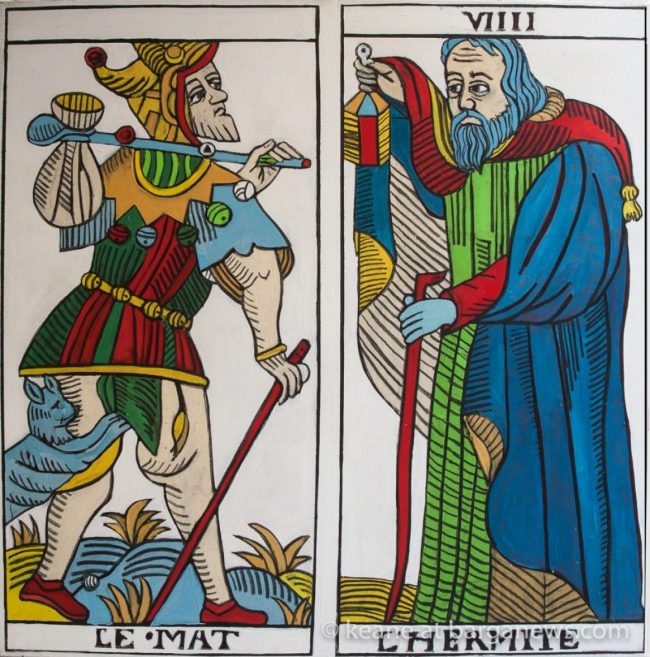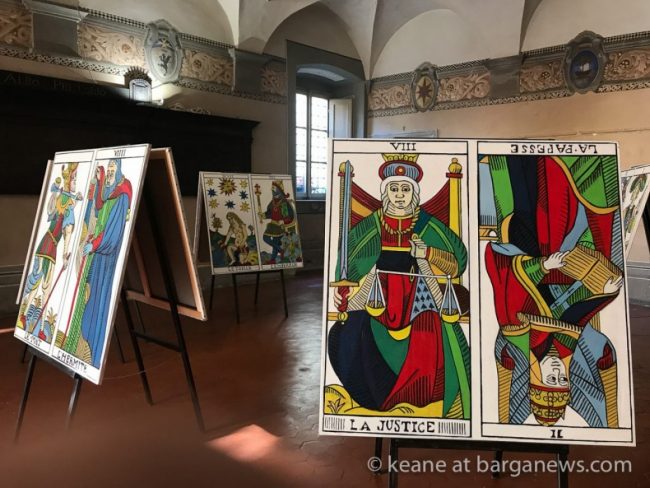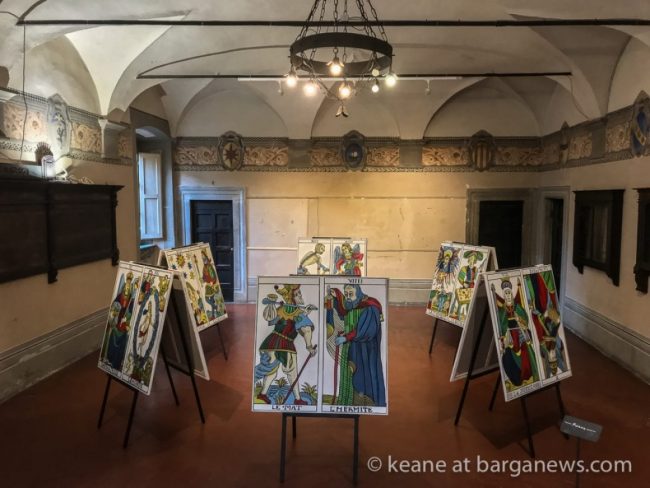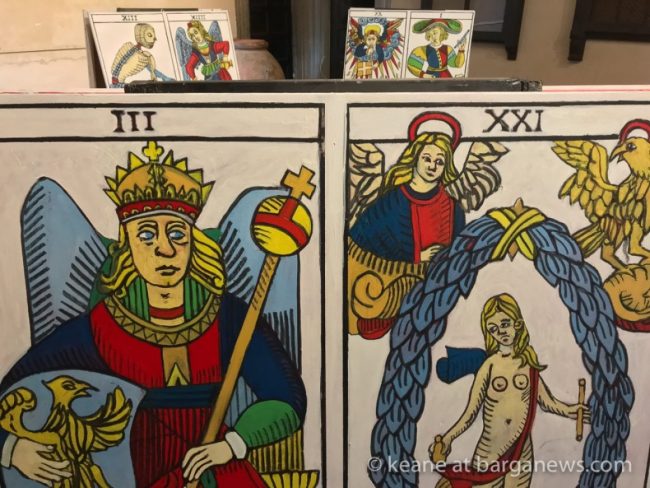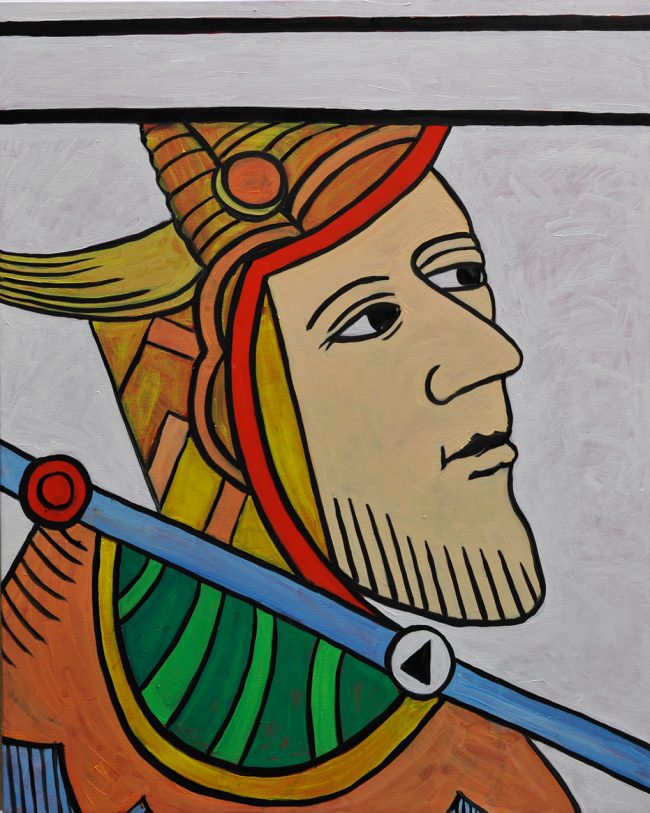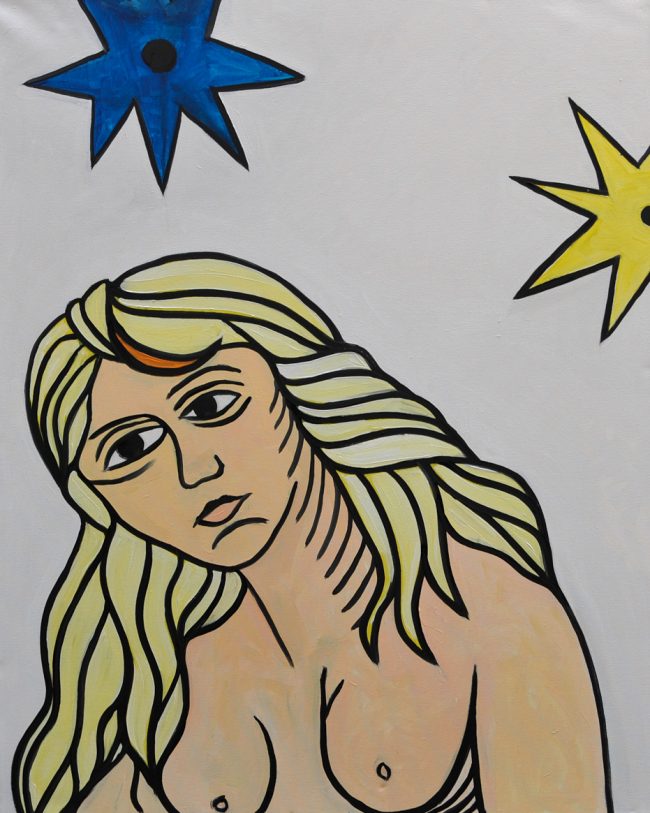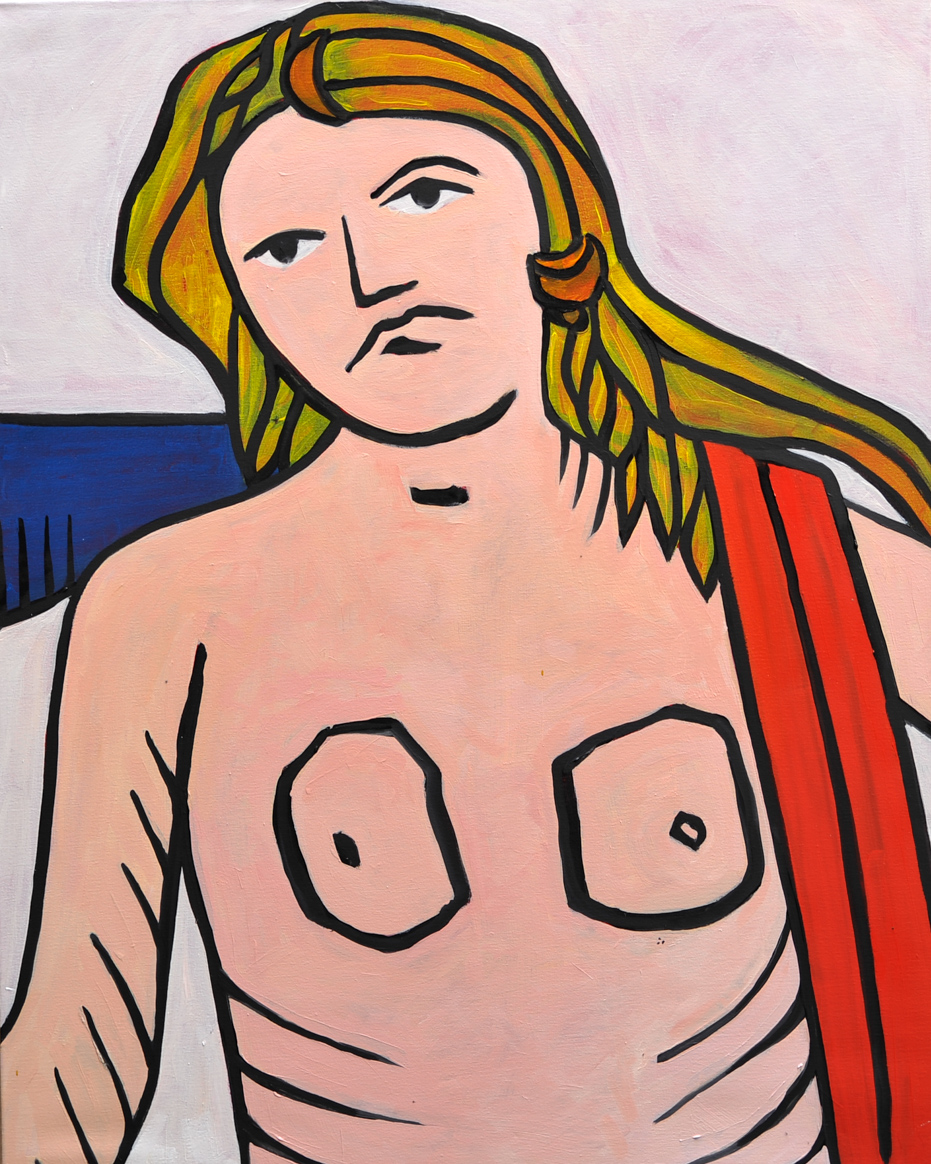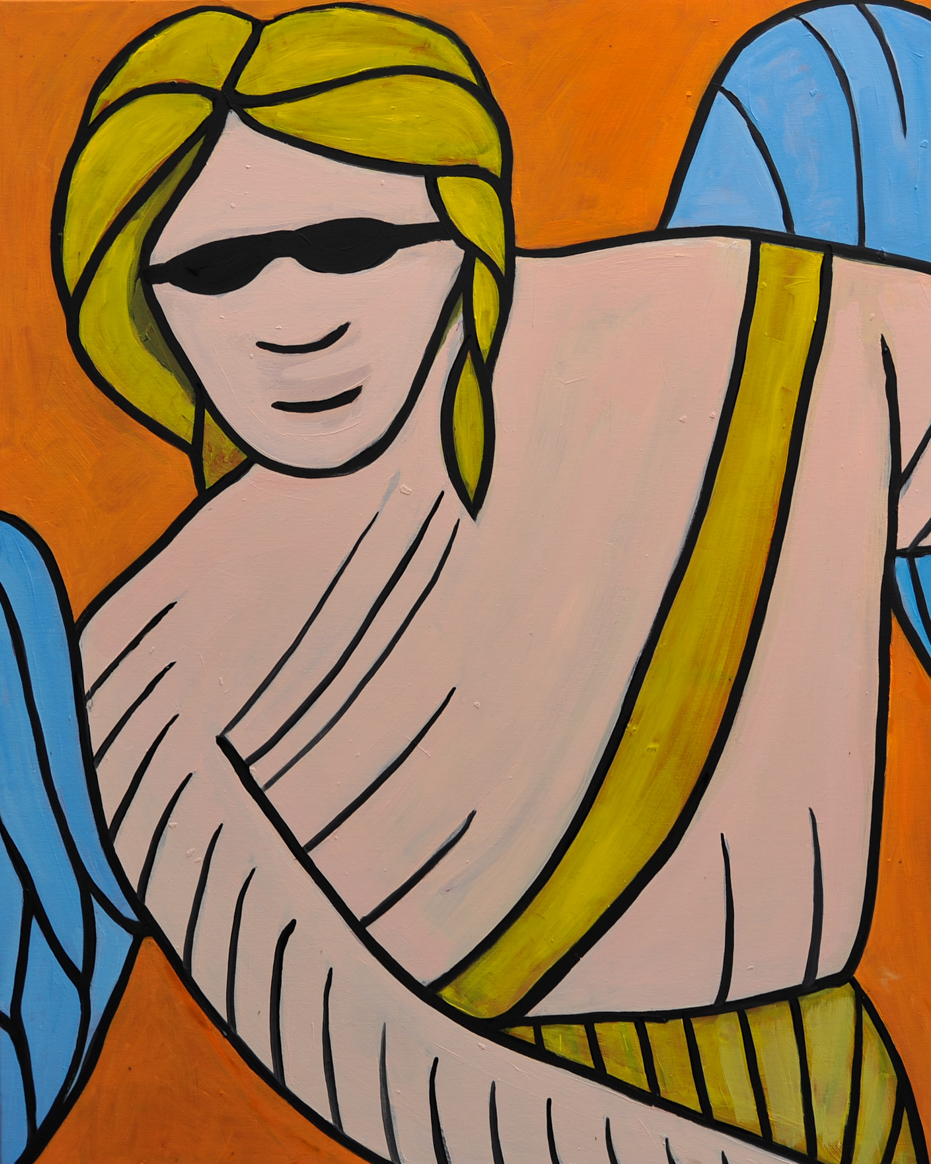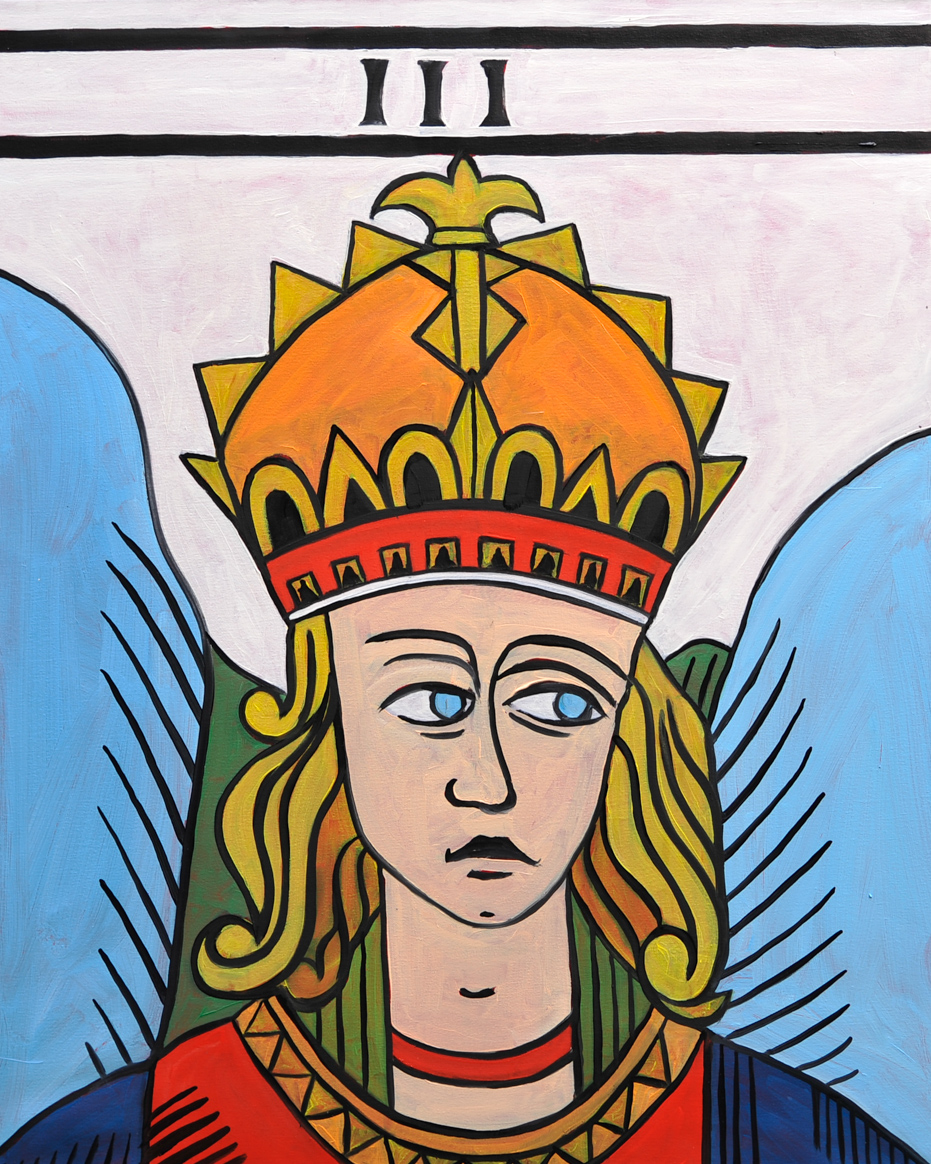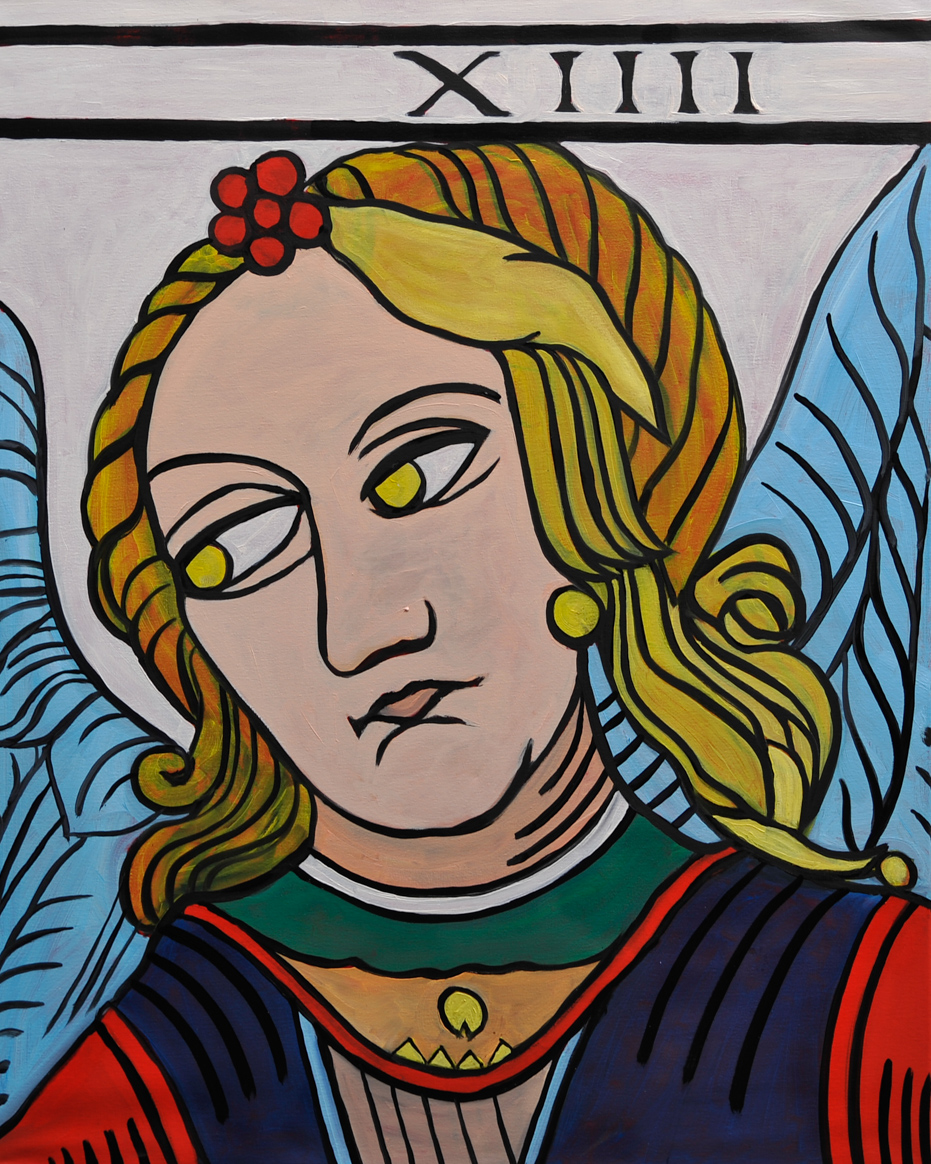Setting, subject and artist are the three interlocked components of a compelling art exhibition. It would be difficult to find a more perfect example than the trio of Barga, Tarot and Keane.
This is the chemistry that animates “The Barga Pop Tarot Paintings,” now open for viewing at the Palazzo Pancrazi in Barga Vecchia. The “Pop” adjective refers to the art movement of that name in the 1950’s and 1960s, whose best-known exponents included Andy Warhol, Robert Rauschenberg and Roy Lichtenstein. It employed mass-cultural objects and graphic media to explore a limitless range of themes, both serious and whimsical.
In a nod to the Pop comic strip style made famous by Lichtenstein, Keane has painted magnified portraits of the mysterious characters found on Tarot cards, the assortment of esoteric archetypes that reach back to the cards’ Medieval origins and far beyond, to the deities of ancient Egypt and India. Equally suitable for straightforward table games and arcane sorties into the human subconscious, the Tarot reading was a form of proto-psychoanalysis, rooted in eclectic religious symbols and codified centuries before the careers of Sigmund Freud and Carl Jung.
According to Paola Marchi, an experienced Tarot reader who collaborated on the mostra, Barga itself “lies on a direct line of ‘spiritual energy’” that traces a sequence of venerable monuments from Mont Saint-Michel in France over the Alps to the Duomo, and onward to the Gargano Peninsula in the southeastern region of Puglia — home of a celebrated shrine to San Michele. One of the key Tarot cards features a majestic figure identified as “Justice” who is believed by some interpreters to represent Saint Michael “although others see him as the Norse god Odin,” says Marchi.
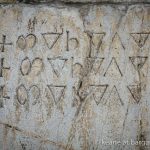 The connection casts speculative light on two of Barga’s own pervasive mysteries. An engraved inscription in stone at the Duomo’s main portal appears to refer three times, in a combination of Latin and Greek letters, to “San Michele.” Above it, more than 200 bas-reliefs of uncertain age on the upper facade appear to illustrate figures and episodes from Norse mythology (article here)
The connection casts speculative light on two of Barga’s own pervasive mysteries. An engraved inscription in stone at the Duomo’s main portal appears to refer three times, in a combination of Latin and Greek letters, to “San Michele.” Above it, more than 200 bas-reliefs of uncertain age on the upper facade appear to illustrate figures and episodes from Norse mythology (article here)
The exhibition’s paintings are based on a painstaking reconstruction of the original French “Tarot of Marseilles,” among the most revered of many Tarot decks, which first appeared in 1760. The reconstruction was a joint project of Marseilles-born Philippe Camoin, one of the world’s most respected experts on the subject and Marchi’s mentor, and Alejandro Jodorowsky, a Chilean filmmaker and spiritual guru. “Every detail on their cards has significance. Nothing is there by chance,” says Marchi.
“It was intense, demanding work, requiring absolute fidelity to the originals,” Keane says of his paintings. “Even marks that initially seemed like accidental brush strokes turned out to be meaningful.”
The second part of this exhibition can be seen at the Locanda di Mezzo’s cantina bistro under Palazzo Mordini in Piazza dell’Annunziata (article here)
The Tarot Cards
The tarot first known as trionfi and later as tarocchi is a pack of playing cards (most commonly numbering 78), used from the mid-15th century in various parts of Europe to play a group of card games such as Italian tarocchini and French tarot. From the late 18th century until the present time the tarot has also found use by mystics and occultists for divination.
Italy is said to be the birthplace of the tarot, which according to playing-card historians was originally a card game invented in the fifteenth century and whose principal innovation was the introduction of trumps into Western European card-gaming.
The symbolism found on some early tarot cards has led many people to believe that tarot cards are in fact the expression of ancient streams of wisdom… the eternal, esoteric and holy tradition itself.
Following this belief, modern tarot packs draw upon the teachings of a tremendous range of traditions, including Kabbalah, Western esotericism and alchemy, Buddhism, Sufism, Egyptian initiations, mystical Christianity, Gnosticism, Neoplatonism, Celtic mythology… and so on.
The Tarot of Marseille restored by Philippe Camoin and Alexandre Jodorowsky
Founded in 1760 by Nicolas Conver who in the same year engraved his famous Tarot de Marseille, the Conver Factory in Marseilles, France became by marriage the Camion House.
Keeper of the Tarot of Marseilles tradition for more than two centuries, the Camoin House was forced by the industrial revolution to change the colours of the Tarot. After long research work, Philippe Camoin and Alexandre Jodorowsky rebuilt the colours and symbols of the Tarot. Some of them were incomplete or had already disappeared by the 18th century.
“Almost all of the Tarots in the world are copied on the pattern of the Tarot de Marseille”, observes Philippe Camoin, in the light of numerous irrefutable signs which he had gathered and uncovered in the course of his investigations of the Tarot de Marseille. The essential goal of this research was to rediscover the symbols, the purpose, and the primary meaning of this monument of Western culture, in a way that the language ws equally intelligible to our friends in the East. It is helpful to quote here H.P. Blavatsky: “The Tarot is the key to all of Western esotericism.”
The meaning and interpretation of symbols is familiar terrain for Keane. In earlier exhibitions, he has explored such varied symbolic vocabularies as the Duomo bas-reliefs, the “mutande” (undergarments) that Barghigiani hang out to dry over the town’s narrow lanes, the Tuscan blood sausage known as “biroldo” and Italian ice cream cones.
 |
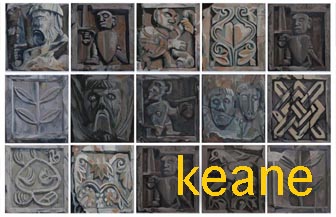 |
 |
 |
L’ambientazione, il soggetto e l’artista sono i tre componenti interconnessi di una mostra d’arte avvincente. Sarebbe difficile trovare un esempio più perfetto del trio di Barga, Tarocchi e Keane.
Questa è la chimica che anima “I Dipinti Pop dei Tarocchi di Barga”, ora aperti per la visualizzazione al Palazzo Pancrazi a Barga Vecchia. L’aggettivo “Pop” si riferisce al movimento artistico di quel nome negli anni ’50 e ’60, i cui più noti esponenti includevano Andy Warhol, Robert Rauschenberg e Roy Lichtenstein. Utilizzava oggetti della cultura di massa e media grafici per esplorare un vasto assortimento di temi, sia seri che whimsical.
In un omaggio allo stile dei fumetti Pop reso famoso da Lichtenstein, Keane ha dipinto ritratti ingranditi dei misteriosi personaggi presenti sulle carte dei Tarocchi, l’assortimento di archetipi esoterici che risalgono alle origini medievali delle carte e ben oltre, alle divinità dell’antico Egitto e dell’India. Adatti sia per giochi da tavolo diretti che per incursioni arcane nell’inconscio umano, la lettura dei Tarocchi era una forma di proto-psicoanalisi, radicata in simboli religiosi eclettici e codificata secoli prima delle carriere di Sigmund Freud e Carl Jung.
Secondo Paola Marchi, un’esperta lettore di Tarocchi che ha collaborato alla mostra, Barga stessa “giace su una linea diretta di ‘energia spirituale'” che traccia una sequenza di monumenti venerabili dal Mont Saint-Michel in Francia, attraverso le Alpi fino al Duomo, e poi verso la Penisola del Gargano nella regione sud-orientale della Puglia – sede di un celebre santuario di San Michele. Una delle principali carte dei Tarocchi presenta una figura maestosa identificata come “Giustizia” che alcuni interpreti credono rappresenti San Michele “sebbene altri lo vedano come il dio norreno Odino”, dice Marchi.
La connessione getta una luce speculativa su due misteri pervasivi di Barga stessa. Un’iscrizione incisa nella pietra sul portale principale del Duomo sembra fare riferimento tre volte, in una combinazione di lettere latine e greche, a “San Michele”. Sopra di esso, più di 200 bassorilievi di età incerta sulla facciata superiore sembrano illustrare figure ed episodi della mitologia norrena.
I dipinti della mostra si basano su una ricostruzione meticolosa del originale “Tarocco di Marsiglia”, tra i più venerati tra i molti mazzi di Tarocchi, che comparve per la prima volta nel 1760. La ricostruzione è stata un progetto congiunto di Philippe Camoin, nato a Marsiglia, uno dei più rispettati esperti mondiali in materia e mentore di Marchi, e Alejandro Jodorowsky, un regista cileno e guru spirituale. “Ogni dettaglio sulle loro carte ha significato. Nulla è lì per caso”, dice Marchi.
“È stato un lavoro intenso, impegnativo, che richiedeva assoluta fedeltà agli originali”, dice Keane dei suoi dipinti. “Anche i segni che inizialmente sembravano semplici pennellate accidentali si sono rivelati significativi”.
La seconda parte di questa mostra può essere vista nel cantin bistro della Locanda di Mezzo sotto il Palazzo Mordini in Piazza dell’Annunziata.
Il significato e l’interpretazione dei simboli sono terreno familiare per Keane. In mostre precedenti, ha esplorato vocabolari simbolici vari come i bassorilievi del Duomo, le “mutande” appese a seccare sopra i vicoli stretti della città, la salsiccia di sangue toscana nota come “biroldo” e i coni gelato italiani.
